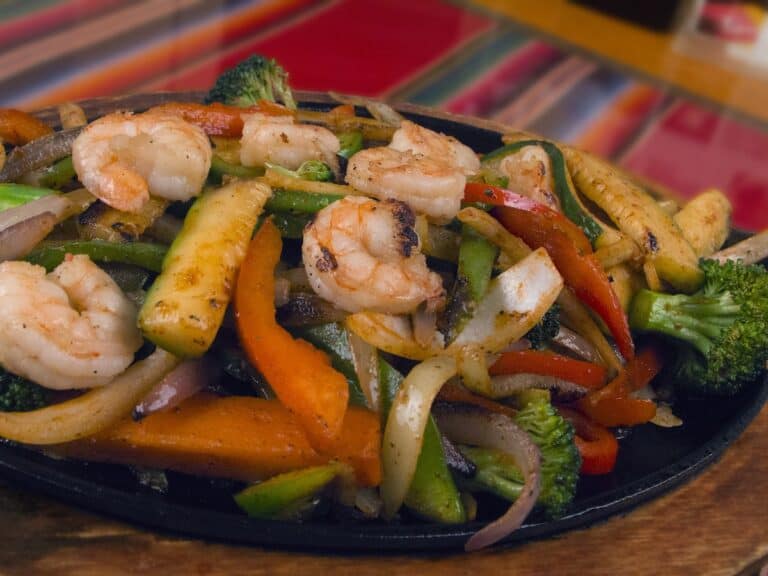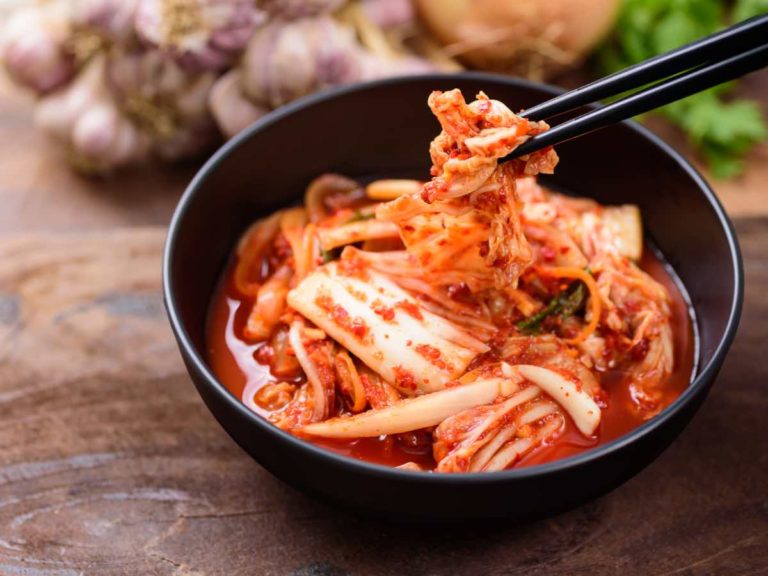How To Eat Cheap For A Week: 9 Helpful Tips
Have you ever experienced looking at your wallet and seeing a few bills left from your weekly budget? You promised yourself to start saving a chunk of your salary to pay off your credit cards. But it’s a week to payday, and you need quick answers on how to eat cheap for a week without starving yourself?
In general, eating cheap means using one or more of the following techniques: preplanning weekly meal plans, sticking to the shopping list in the grocery stores, choosing items on sales or store brands instead of brands advertised on TV, and extensively using coupons.
Deciding to eat cheap does not mean you are desolate or in the dumps. It means you are consciously taking control of your vulnerable position and taking control of it. Instead of falling into more debt or putting yourself and your family in a precarious financial situation, you cut down on food expenses for a week and get back into your budget.
You have to face the reality that you have to stick to the low-cost strategy while keeping yourself nourished and filled in your tummy to do your daily activities.
It’s not rocket science, but it requires a bit of sacrifice and willpower to stick to the program. Remind yourself that the period of low-budget meals is a short time, seven days to be exact, and will have a positive impact on your finances.
While you can eat out and get value meals, if you compute the total cost for three meals, it is still cheaper to prepare meals at home. Here are some practical suggestions on how to eat cheap for a week that you can adapt to your to-do lists.
Create a 1-week meal plan

Planning for a one-week meal plan will save you both time and gas money. It allows you to have a mindset to focus on the meals for the next seven days. Before you start your meal plan, get yourself organized and update your shopping list.
- Check your freezer and refrigerator and list down the items.
- Check your canned goods to see what you have to make into a meal.
- Make a chart and write down what meals you can cook using the contents of your freezer and refrigerator, as well as your pantry.
- Check the web for budget meals that you add to the week’s meal plan keeping in mind the grocery sales of food you will include.
- List down the needed ingredients to complete your meal plan in your shopping list. Stick to basics and avoid imported ingredients that will raise your grocery bill.
- Incorporate grains such as rice, pasta, couscous, and barley into your meals as a side dish and filler-up.
- Check ads to see what is on sale and use money-saving coupons to lessen the bill.
Following a meal plan allows you to plan your grocery runs and stick to the list without having to do unnecessary errands in the middle of the week. It saves you from being tempted to give in to a food craving. Overall, you can think of it as short term and trial run for your monthly meal planning.
Stick to the Shopping List
No matter how tempted you are to grab a bag of chips or try a new meal that is front and center on the frozen counter, resist it. Do not even attempt to pass through the temptation aisle where you always grab something on your grocery runs. Your shopping list is a narrowed list of what you need to prepare meals and feed your home.
That means watching the number of ingredients and buying what is needed for the one-week meal plans. Given a choice of buying 2.5 pounds of beef when the recipe only requires a pound, then you follow the quantity. The same rule applies for the sidings and vegetables because you want to use the ingredients and not have any extras.
Besides, getting your grocery spending under control is like mind over matter. You may struggle with the urge to get an item out of the list, but when you see the cashier total your bill, then it will be worth it. Sticking to the grocery list keeps your spending within your budget, which works for you in the long run.
- List down 40 items in your shopping list and get your items in the cart and nothing more.
- Set a time limit of how long you will do your shopping and avoid the aisles where you cannot resist buying something.
- Proceed to the cashier as soon as you finish your grocery list and check out immediately to curb impulse buying.
Related Post: How to Store Pizza
Buy Marked Down or Sale Items
A grocery is a place where you find different products at different price ranges. There are sale items that are scheduled for the week before the next stock-up of new inventory. This is where you become savvy and plan your shopping around that day to get the special offer.
When you buy markdown, there are items that you avoid if it’s close to the expiration date. Use your rule of thumb when judging the condition of produce by using your five senses, otherwise avoid if you are not sure. Understand the difference in the label that you see in the food labels.
- The words Best by are for the consumers to know when the flavor or quality is at its peak.
- The words Use by are for the consumers to know when to use a product for the best food quality.
- The words Sell by are a guide to the store or grocery to indicate how long the product must be on the shelves.
If you notice a food item whether it be bread or meat, about to expire the next day, you can approach a store employee and ask if the item will be marked down. In most cases, the store will mark it down right in front of you. But you have to pay close attention to items that have the tell-tale signs of a possible cause of food poisoning
- Avoid dented, swollen, or leaking canned food.
- Avoid foods that have damaged or tears in the packaging because it is an entry point for bacteria.
- Avoid chilled or frozen foods that are left outside of the chiller or freezer in the grocery.
- Avoid getting from the Ready to Eat selection that is left uncovered on the counter.
- Do not buy cracked or dirty eggs.
Make use of the Coupons
Coupons are as good as cash and should never be ignored. You can easily search the web and type in the name of the grocery, meat store, or restaurant and add the word coupon in the word search. Most times, you get into the establishment’s Facebook link or website and find the available coupon in a QR code or a confirmation number.
Another way to get hold of coupons is to check the neighborhood or Sunday newspaper inserts, the Entertainment Book, or mailed in coupons from store memberships. But you should avoid getting trapped into buying items you don’t need just because the coupon offers a discount. Here are some suggestions when it comes to coupon-holding.
- Clip only the items you use and need, and forget about the others. It’s a temptation you do not need to have hanging in your hand.
- File your coupons in a convenient location like the glove compartment or a pocket in your handbag.
- Use your coupon during the sales period in the grocery and maximize your discounts.
- Join your neighborhood grocery’s loyalty program and avail of a sale price offered to its members.
- Search for grocery apps on your phone. You get rebates after you scan the receipt. Store credit is given that you use immediately.
Prefer Store Brands Over Name Brands
When you enter the grocery, you can recognize popular brands that jump at you. At the same time, you will see cartons, bottles, bags beside the brands and realize there are other choices in the same category. You wonder what the difference between a name-brand product with the generic and store brand names.
Groceries and Shops have a marketing strategy they apply to the display racks. The most expensive brand is displayed at the eye level of the customer. While the generic and store brands are placed on top or below the display rack. There are three kinds of name branding for a product.
- The name brands have trademarked products with marketing costs and are a bit more expensive than generic and store brands.
- The generic brands use plain and basic packaging with a generic name on the label of the item. It costs much less than the name brand.
- A store brand is the exclusive label of the grocery, shop, or convenience store. The price is much cheaper with the same quality as the name brand.
Remember that there are different levels of brands, whether it be a premium or value version. It will depend on three reasons that differentiate each other.
- Cost comparison between the generic or store brand averages at 27% less than the name brand.
- The quality of staple products such as sugar, flour, cereal, and canned goods have a very close taste on the generic, store, and name brand.
- The nutritional value is different for a name brand than a superstore or generic brand. It will like to have fewer preservatives and fresh ingredients.
Buy Loose Fruit Vegetables or Fruits
One of the most colorful and exciting areas of the grocery is the vegetable and fruit section. You are surrounded by fresh piles of greens, reds, and yellows in every shape and form. You stand in the center of nature’s bounty and ready for the picking.
When you choose your vegetables or fruit, you save money by 53%. The unit price of the item compared to buying packed or bagged fruit or vegetables. That applies to cooking for more than one serving, wherein you choose the size and weight of the item according to your needs. But if you are cooking for one serving, then the pre-packed produce may come out 35% cheaper than buying a bunch of vegetables.
When you buy loose produce, you see the degree of ripeness and can estimate if you need your item raw to be used later in the week or otherwise. You have the freedom to choose your item from the national brands versus the smaller brands where savings are evident in the unit price. Your choice to do away with plastic packaging makes a direct impact on protecting the environment.
Buy Food in Season
There are foods sold during different seasons, and buying fresh produce when in abundance allows you to pay the minimum. It’s priced to sell quickly because the stock will pile up. You will do the local farming industry a favor if you choose local products coming from family farms or managed by locals.
Buying foods in season, namely fish, vegetables, or fruits gives you the best opportunity to enjoy at the peak of its flavor and freshness. You get a great deal out of buying what is available and help you cut back on your food expense.
Usually, fresh produce that is sold in the market is frozen packed for selling. This fresh-frozen product was packed at the optimum condition to save from getting overripe.
This is worth buying because the product has been blast frozen at the highest level of its ripeness. By freezing the food, you get more nutrients than the same item that is canned. You get more dollars in the
Recycle Leftover Food
Never throw leftovers because you can recycle them into another dish. It challenges your level of culinary creativity on how to make the dish look different. At the start, you’ll need to read up on easy recipes but later on, you’ll get the hang of recycling.
There are ways to recycle leftover food that will appear like a different dish altogether. Instead of throwing it out of the bin, keep the leftover chilled until the next meal. The leftover dish has been flavored and marinated, for an easy quick fry, convert it into a stew, or make it into a casserole dish.
- Separate the sauce from the meat or chicken.
- Cube or shred the meat and cut the vegetables the same way.
- Sautee garlic and add in the shredded or cubed meat, then add a bit of soy sauce or Worcestershire seasoning for a quick fry.
- Use dry leftover ingredients and throw them into a tomato-based broth, then simmer for flavors to mix.
- Use dry leftover ingredients and add a cream-based condensed soup with a half cup of water and bake in the oven.
- Add a side dish like a mashed or baked potato, rice, or noodle dish.
Related Post: Avoid These Mistakes When Storing Cut Potatoes
Dine Out the Smart Way
Dining or eating out is more expensive than cooking your meals. If you are two or more in the house, you will save a lot of money if you avoid eating out. But if you are alone, instead of buying groceries, it may be cheaper to eat out minus the hassle of washing dishes and keeping leftover food.
There might be a reason you’ll need to eat out of the home, so you’ll have to dine out the smart way. While it is cheaper to cook your food and bring a lunchbox to work, you can’t always do that. There are ways to dine out the smart way and still stick within your weekly budget.
- Choose the daily specials and compare if it is cheaper than an ala carte meal.
- Look for happy hour food specials that have food at half the price with a drink.
- Book reservations with online deal sites that have discounted dining certificates.
- If the serving per person in the restaurant is a large portion, you can split the order with a co-worker.
- Order an appetizer which are cheaper instead of entrees.
- Schedule dine-outs during lunchtime instead of dinner as the prices for dinner are more expensive.
- Choose restaurants where you have a loyalty card and avail of the free dessert or free drink that goes with your order.
- Skip the glass of wine and opt for water to keep your bill strictly as a food expense.
Takeaway
There are many reasons why you need to eat cheap, but not at the expense of compromising your health and diet. The strategy is to plan ahead and mentally prepare yourself to do this under this exercise for a good purpose. You need to save every cent and use it to build a better future for yourself and your family.
The most practical advice to follow would be creating a meal plan and sticking to the shopping list. That is something you should do weekly and revise if you need to correct or update. Learning when the marked downs happen in the week will result in big savings as well. Remember the tips when dining out to still keep within the budget.





